In this guide, we will explore the intricacies of caring for cold water aquarium plants, drawing from my personal experiences and the lessons I’ve learned along the way. You’ll be introduced to the fundamental aspects of selecting the right plant species, understanding their specific needs, and the detailed steps necessary for planting, cultivation, and maintenance within a cold water environment.
We’ll cover everything from the ideal water parameters and lighting requirements to effective techniques for preventing algae growth and ensuring your aquatic plants thrive. Whether you’re a seasoned aquarist or just beginning to dabble in the world of cold water aquariums, this article aims to equip you with the knowledge and confidence needed to create a thriving aquatic ecosystem.
Key Takeaways
In reflecting on my experience with maintaining cold water aquarium plants, I’d like to share some key takeaways that I hope will guide and inspire your aquatic gardening endeavors:
- Rigorous Inspection and Quarantine: Always thoroughly inspect and quarantine new plants to safeguard your aquatic ecosystem from pests and parasites. My routine checks have been pivotal in preventing infestations.
- Consultation and Community Engagement: Do not underestimate the value of seeking advice from experts and engaging with the aquatic gardening community. The insights and support I’ve received have significantly influenced my approach and success.
- Adaptability and Observation: Be observant and responsive to your aquatic plants’ needs. Each species requires a tailored approach to lighting, nutrients, and water conditions. My successes have often come from making adjustments based on close observation.
- Leveraging Digital Platforms for Knowledge: Utilize online forums, social media, and digital resources to continuously learn and find inspiration. The wealth of information available has been instrumental in my growth and the health of my aquatic plants.
- Patience and Proactivity: Balancing patience with proactivity is key. Changes in your aquarium will not manifest overnight, but timely interventions can prevent small issues from becoming detrimental.
Water Parameters for Cold Water Aquarium Plants
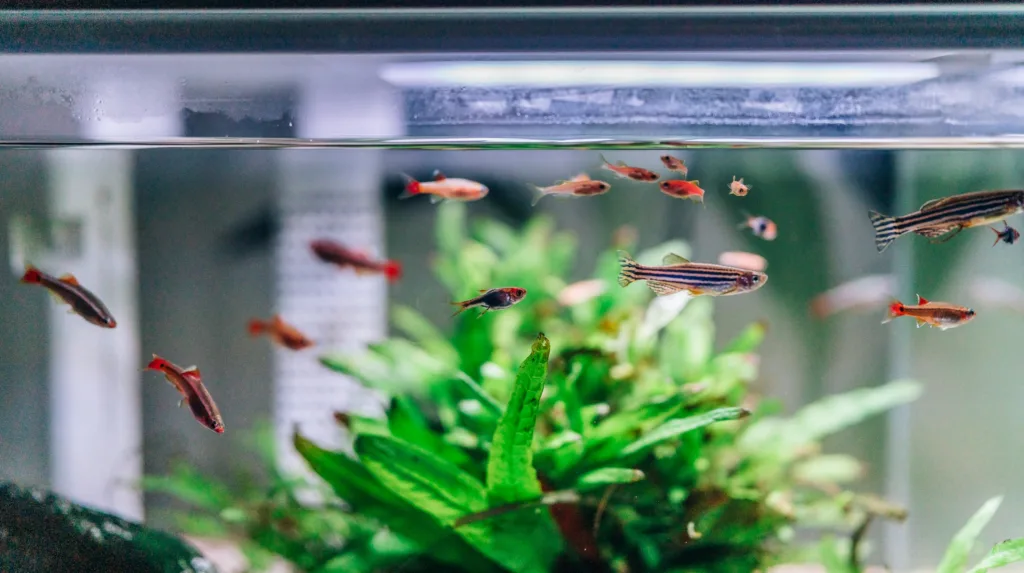
In my years of maintaining cold water aquariums, I’ve come to understand how crucial water parameters are for sustaining healthy plant life. The delicate balance of temperature, pH, and water hardness directly impacts the vitality of your aquatic plants. Here’s a breakdown of these critical parameters, based on my experience:
A. Temperature: Ideal Range for Cold Water Plants
The ideal temperature range for cold water aquarium plants typically falls between 15°C to 24°C (59°F to 75°F). It’s essential to keep the water within this range to ensure your plants can perform photosynthesis efficiently without stress. I’ve observed that maintaining a stable temperature within this bracket can significantly enhance the health and growth rate of the plants.
B. pH Level: Maintaining Suitable Acidity or Alkalinity
pH levels in a cold water aquarium should generally range from 6.5 to 7.5, maintaining a balance that is neither too acidic nor too alkaline. This range supports most cold water plant species, enabling optimal nutrient absorption and growth. Regular testing and adjustments, if necessary, help in stabilizing the pH level, ensuring it remains conducive for plant health.
C. Water Hardness: Considerations for Plant Growth
Water hardness, measured in degrees of General Hardness (dGH), is another crucial factor for plant growth. Cold water plants thrive in soft to moderately hard water, ideally within 4 to 12 dGH. Soft water facilitates easier nutrient uptake for plants, promoting better growth and vibrant foliage. Managing water hardness through the use of reverse osmosis water or water conditioners has been beneficial in my setup.
D. Nutrient Availability: Essential for Plant Health
Ensuring your water contains the right balance of nutrients – including nitrogen (N), phosphorus (P), and potassium (K), along with trace elements like iron – is vital for the health of your aquatic plants. Cold water plants require a consistent supply of these nutrients to perform crucial biological functions, including photosynthesis and growth. I’ve found that liquid fertilizers and root tabs can be effective ways to supplement these nutrients, depending on the plant species and their specific needs.
E. Lighting Requirements: Optimal Light for Photosynthesis
While not a water parameter per se, lighting plays a significant role in the health of cold water aquatic plants. The ideal lighting should mimic natural sunlight, providing the full spectrum of light that plants need for photosynthesis. I recommend using LED lights designed for aquarium plants, with an exposure of about 8-10 hours per day to simulate natural daylight cycles. Ensuring your plants receive proper lighting is crucial for their growth and the overall aesthetics of your aquarium.
Lighting Requirements for Cold Water Aquarium Plants
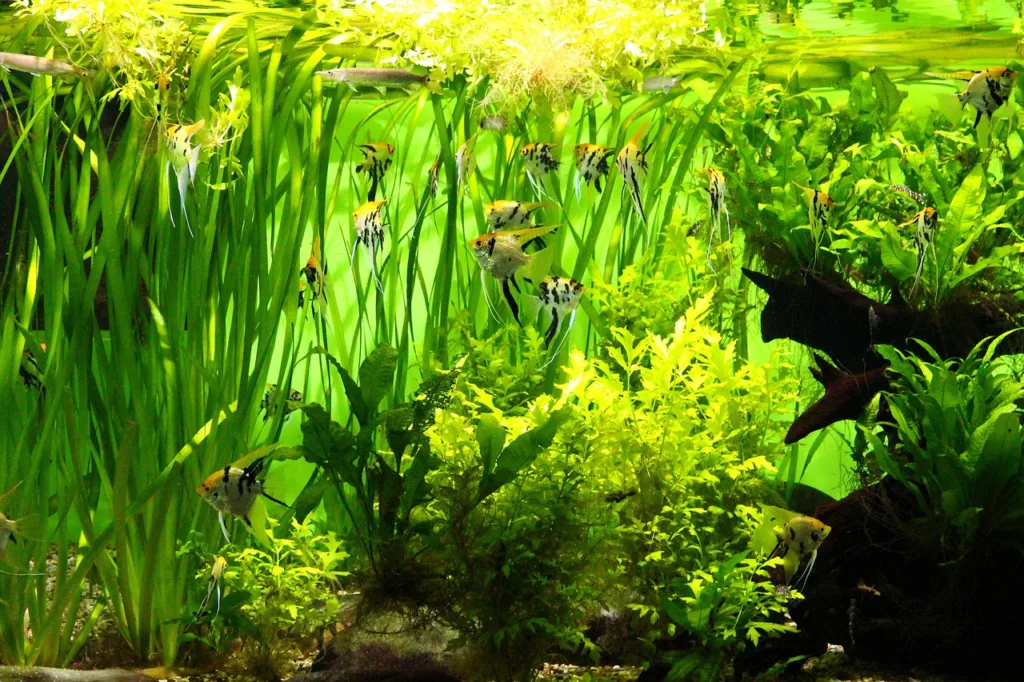
Lighting is a critical element in the successful cultivation of cold water aquarium plants. Through years of trial and error, I’ve gathered actionable insights into managing lighting to promote healthy and vibrant plant life. Below, I’ll share my experiences and recommendations for optimizing lighting within your cold water aquarium.
A. Understanding Light Intensity Needs
The intensity of light required by cold water plants can vary significantly between species. Some plants thrive under low-light conditions, while others demand more intense lighting to facilitate their growth processes. From my experience, a general guideline is to provide around 0.5 watts per liter for low light plants and up to 1 watt per liter for more demanding species. It’s crucial to research the specific light intensity needs of your plants and to monitor their responses to adjustments in lighting. Signs of insufficient light include slow growth and pale leaves, whereas too much light can lead to algae problems.
B. Duration of Light Exposure: Photoperiod Considerations
The length of time your aquarium is exposed to light directly impacts plant health and algae growth. In my experience, maintaining a consistent photoperiod of 8-10 hours per day offers the best results for cold water aquarium plants. It closely mimics the natural daylight cycle, providing enough time for photosynthesis without promoting excessive algae growth. Using a timer for your aquarium lights can help maintain a stable photoperiod. Observing your plants’ response to the light duration is key, as some signs of distress can be mitigated by adjusting the photoperiod.
C. Choosing the Right Type of Lighting for Cold Water Aquariums
Not all lighting is created equal when it comes to aquatic plants. LEDs have become my go-to for several reasons—they offer excellent energy efficiency, generate less heat, and provide a full spectrum of light which is beneficial for plant growth. They’re also customizable, allowing aquarists to adjust the intensity and even the color of the light to best suit the needs of their plants and mimic natural light conditions as closely as possible. When selecting lighting for your aquarium, ensure that the system you choose can be tailored to the specific needs of your plants.
D. Spectral Considerations for Plant Health
The spectrum of light provided by your aquarium lighting system plays a pivotal role in promoting healthy plant growth. Cold water plants typically require a spectrum that leans towards the blue and red ends, enabling effective photosynthesis. From my setup, I’ve observed that lights which offer a blend of these spectrums result in more vibrant growth and healthier plants. Lights that are too heavily skewed towards one end of the spectrum can cause plants to stretch unnaturally towards the light source or hinder their development.
E. Advanced Lighting Techniques: Using Dimmers and Controllers
Incorporating dimmers and controllers into your aquarium’s lighting setup offers unparalleled control over the intensity and duration of light exposure. These tools have been game-changers in my aquarium management, allowing me to create dawn-to-dusk effects that simulate natural light conditions. This not only benefits plant health by providing a more naturalistic environment but also enhances the visual appeal of the aquarium. Experimenting with advanced lighting techniques can significantly improve your plants’ growth and the overall aquarium experience.
Substrate and Planting Techniques for Cold Water Aquarium Plants
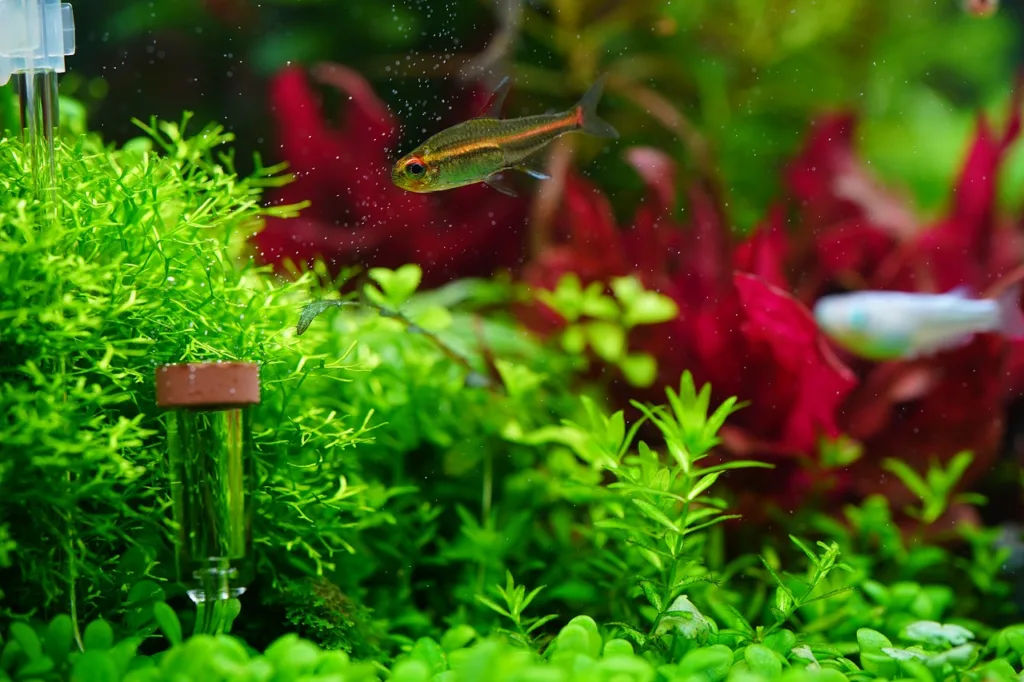
Selecting the right substrate and planting techniques is crucial for the health and aesthetics of any cold water aquarium. Over the years, I’ve experimented with various substrates and planting methods to understand what works best for different plant species. I’ll share my experiences and guide you through selecting substrates, effective planting methods, and tips for creating a stable environment for your aquatic plants.
A. Selection of Substrate: Gravel, Sand, or Substrate Additives
In my experience, the choice of substrate can significantly affect plant growth. Gravel is popular due to its aesthetic variety and ease of cleaning. It allows water to flow through, which helps with nutrient distribution but might not always provide adequate support for root growth. Sand, with its compact nature, can support plants well but requires careful maintenance to prevent the formation of anaerobic spots. For those looking to optimize plant health, investing in substrate additives or specialized plant substrates can make a huge difference. These products often contain essential nutrients that encourage robust root development and plant growth.
B. Planting Methods: Anchoring or Planting in Substrate
When it comes to planting, I’ve used two main methods: anchoring and direct planting into the substrate. Anchoring is useful for plants that do not need to be buried, such as mosses or plants that cling to rocks and driftwood. This technique allows for easy rearrangement and is excellent for creating vertical interest in your tank. For root-feeding plants, direct planting into the substrate is essential. Gently burying the roots while ensuring the crown remains above the substrate can promote healthy growth. It’s important to consider the density and type of substrate used here, as some plants have more demanding requirements.
C. Creating a Stable Environment for Rooted Plants
Ensuring a stable environment for rooted plants involves more than just proper planting; it requires ongoing substrate management. Avoid compacted substrates that can hinder root growth and water circulation. Regularly testing water parameters and making adjustments as needed will also benefit root development. Additionally, consider using root tabs or substrate additives to replenish nutrients consumed over time, ensuring your plants always have access to essential growth elements.
D. Integration of CO2 Systems for Enhanced Growth
Integrating a CO2 system into your cold water aquarium can vastly improve plant health and growth rates. Plants utilize CO2 in the photosynthesis process, converting it into the sugars they need to grow. I’ve found that a well-regulated CO2 system, combined with proper lighting and nutrient availability, can lead to lush and vibrant plant growth. It’s important to monitor CO2 levels closely, as too much or too little can adversely affect both plants and fish.
E. Routine Maintenance for Sustained Plant Health
Routine maintenance is paramount for sustaining plant health in a cold water aquarium. This includes trimming plants to promote growth, removing dead or decaying foliage to prevent nutrient depletion, and vacuuming the substrate to remove waste and uneaten food. I make it a point to inspect my plants regularly for signs of nutrient deficiencies or disease and take corrective action immediately. Consistent care and monitoring can prevent minor issues from becoming major problems, ensuring a thriving aquatic garden.
Feeding and Nutrient Requirements for Cold Water Aquatic Plants

Feeding and managing the nutrient requirements of aquatic plants in a cold water aquarium is akin to solving a complex puzzle. Each plant species has unique needs, and finding the right balance is critical for promoting vibrant growth and lush foliage. From my extensive experiments and observations, I’ll share insights into ensuring your aquatic plants receive the essential nutrients they need to thrive.
A. Providing Essential Nutrients for Plant Growth
In my experience, the foundation of plant health begins with a well-balanced supply of essential nutrients. These include macronutrients such as nitrogen (N), phosphorus (P), and potassium (K), as well as a range of micronutrients like iron (Fe) and magnesium (Mg). Cold water aquarium plants often absorb these nutrients from both the water column and the substrate. Therefore, I recommend using a substrate designed specifically for planted aquariums as it is enriched with these vital nutrients. Additionally, ensuring your water supply is of high quality and appropriately mineralized can significantly affect nutrient availability.
B. Supplementing with Liquid Fertilizers or Root Tabs
While a nutrient-rich substrate is crucial, I’ve found that supplementing with liquid fertilizers or root tabs can further enhance plant health, especially for heavily planted tanks or those with high lighting and CO2 levels that can increase nutrient demands. Liquid fertilizers provide a direct and readily available nutrient source for plants, which is beneficial for species that absorb nutrients primarily through their leaves. On the other hand, root tabs are ideal for root-feeding plants, slowly releasing nutrients directly into the substrate where the roots can absorb them. It’s essential to follow the recommended dosages and adjust based on your plants’ growth and coloration to avoid nutrient excess, which can lead to algae issues.
C. Monitoring Nutrient Levels and Adjusting Feeding Regimen
Regular monitoring of nutrient levels in your aquarium is pivotal. I use test kits to keep an eye on key nutrients like nitrate (NO3-) and phosphate (PO4^3-), adjusting my feeding regimen accordingly. For instance, if I notice deficiency signs in my plants, such as yellowing leaves or stunted growth, I might increase my dosages of specific nutrients. Conversely, signs of excess nutrients, like algae growth or overly lush foliage at the expense of flowering or fruiting, would prompt me to dial back on fertilization.
D. The Importance of CO2 in Nutrient Absorption
It’s worth mentioning again the crucial role of CO2 in facilitating nutrient absorption. CO2 is not just another nutrient; it’s a key component of photosynthesis, directly impacting plants’ ability to utilize the nutrients available to them. In my setups, ensuring a consistent and adequate CO2 supply has consistently led to improved health and growth rates, making it an indispensable part of my nutrient management strategy.
E. Seasonal Adjustments to Feeding and Nutrients
Finally, adjusting feeding and nutrient dosages according to seasonal changes has proven beneficial in my experience. During periods of higher light intensity and longer daylight hours, plants tend to grow more vigorously and thus have higher nutrient requirements. Conversely, in the winter months, when growth rates may slow, reducing the nutrient supply can prevent waste accumulation and potential algae blooms.
Pruning and Maintenance Practices
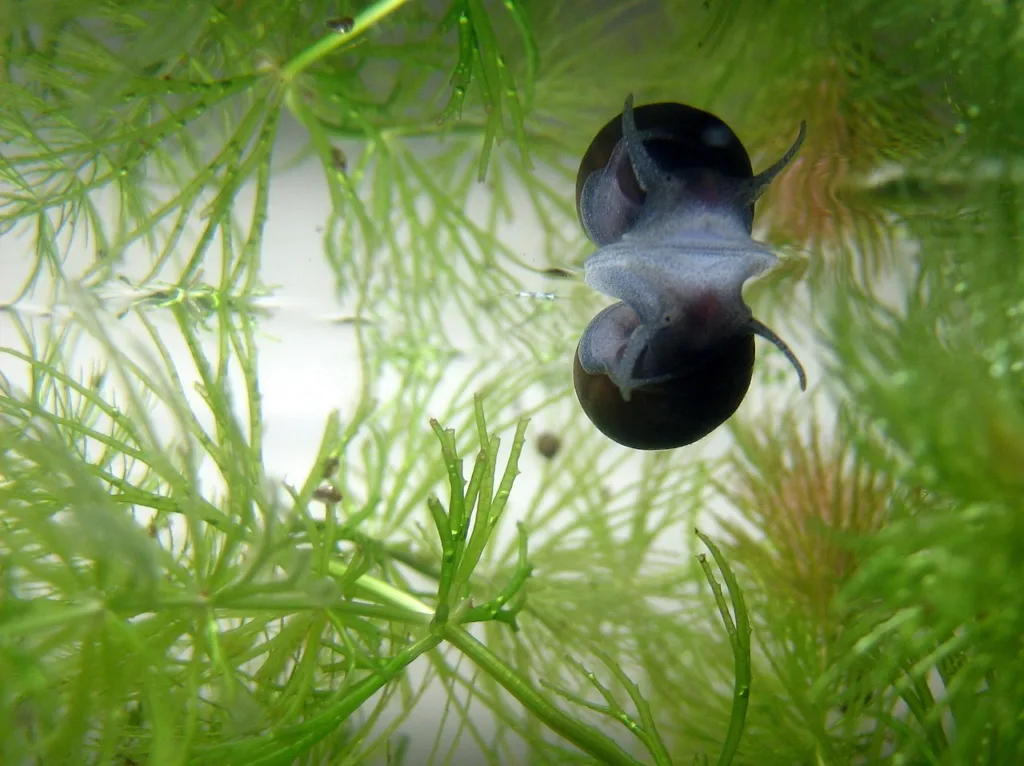
Maintaining a cold water aquarium involves more than just monitoring water quality and nutrient levels; it requires meticulous pruning and maintenance practices to keep the plants healthy and the tank aesthetically pleasing. From my personal experience managing multiple aquarium setups, I have developed several routines that ensure my aquatic plants thrive while maintaining a balanced ecosystem. Here, I’ll share some of these practices with you.
A. Regular Trimming of Overgrown or Dead Plant Parts
One of the key practices in aquarium maintenance is the regular trimming of overgrown or dead plant parts. This not only helps in maintaining the aesthetic appeal of your tank but also promotes healthy growth by allowing light to reach lower parts of the plants. In my tanks, I make it a routine to trim back any excessive growth, ensuring that no plant outcompetes another for light and nutrients. This practice encourages a denser, more vibrant growth form over time.
B. Removal of Algae and Debris from Plant Surfaces
Algae and debris can quickly accumulate on the leaves and stems of aquatic plants, obstructing light and potentially harboring pathogens. I ensure the surfaces of my plants are clean by gently brushing off algae and removing debris during regular tank maintenance sessions. For tougher algae, tools like algae scrapers or soft toothbrushes can be employed carefully to avoid damaging the plants.
C. Preventing and Managing Plant Diseases and Pests
Preventing and managing plant diseases and pests are crucial to sustaining a healthy aquarium environment. I keep a vigilant eye for signs of disease or pest infestations, such as unusual spots, discolored leaves, or the presence of snails and other unwelcome guests. Early detection is key; I use quarantine practices for new plants and treat any affected areas with targeted treatments while trying to maintain the biological balance of my aquarium.
D. Adjusting Plant Placement for Optimal Growth
Adjusting the placement of plants according to their light and space requirements is something I’ve found to make a significant difference in their growth and health. Some plants thrive in the shadows of others, while some require direct light. Regularly reevaluating the layout of your aquarium to ensure each plant is optimally placed can enhance the overall health and visual appeal of your aquarium.
E. Cleaning and Maintenance of Equipment
Lastly, the cleaning and maintenance of equipment, such as filters, CO2 systems, and lights, play an indirect yet crucial role in the health of aquatic plants. I ensure that all equipment is running efficiently and carry out regular maintenance to prevent any failures that could adversely affect the tank’s environment.
Water Changes and Tank Maintenance
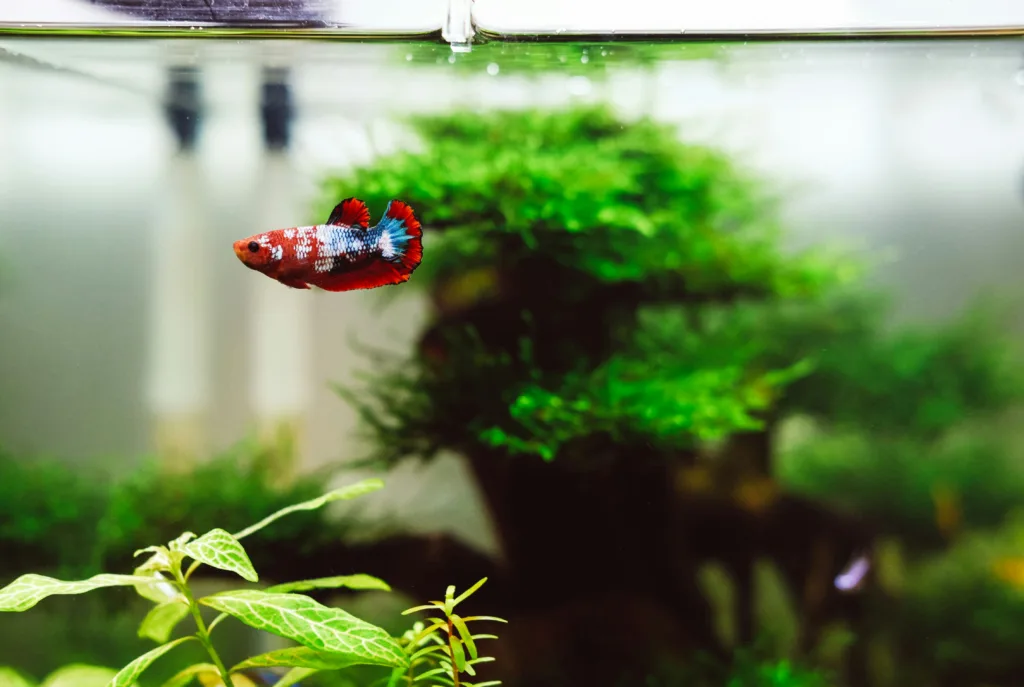
Keeping a balanced and thriving aquatic ecosystem is not just about feeding and pruning; it revolves significantly around the quality of water your plants and fish live in. Here, I will discuss the importance of regular water changes and other maintenance practices based on my first-hand experiences managing cold water aquariums.
A. Importance of Regular Water Changes for Plant Health
In my experience, regular water changes are critical for maintaining the health of aquatic plants. These changes not only remove excess nutrients that could lead to algae outbreaks but also replenish essential minerals that plants need for growth. Depending on the tank’s bioload, I perform water changes weekly, removing about 20%-30% of the tank’s volume. This practice has been instrumental in ensuring my plants remain vibrant and healthy.
B. Vacuuming Substrate to Remove Accumulated Debris
Another practice I’ve found beneficial is vacuuming the substrate during water changes. This helps in removing debris and waste that accumulates over time, which can rot and release harmful substances into the water. By using a gravel vacuum, I can gently agitate the substrate to lift and remove these wastes without disturbing plant roots or the tank’s aesthetic arrangement too much.
C. Checking Water Parameters and Adjusting as Needed
Monitoring and adjusting water parameters is a critical step in maintaining an ideal environment for aquatic plants. I regularly check parameters such as pH, hardness, ammonia, nitrite, and nitrate levels. Any deviation from the preferred ranges can stress or harm plants, leading to poor growth or health. By adjusting these parameters gradually and as needed, using specific treatments or adjusting water change frequency and volume, I maintain a stable environment conducive to plant growth.
D. Managing Light Intensity and Duration
Controlling the intensity and duration of lighting is essential for plant photosynthesis and preventing algae growth. Based on my tank setups, plants thrive under different lighting conditions. I use timers and adjustable LED lights to simulate natural daylight cycles, which has proven effective in supporting plant growth without encouraging excessive algae.
E. Replenishing Essential Nutrients after Water Changes
Following a water change, it can be necessary to replenish certain nutrients that have been diluted or removed from the water column. I use a targeted approach, adding specific liquid fertilizers that replace key macro and micro-nutrients. This strategic supplementation ensures that my plants have access to the essential nutrients they need to prosper, adjusted according to the plants’ observed growth and coloration.
F. Regular Equipment Inspections
Lastly, I cannot emphasize enough the importance of regular inspections and maintenance of aquarium equipment. From filters to heaters, CO2 systems, and lights, ensuring that all components are functioning correctly is paramount. In my routine, I inspect these items during water changes, cleaning or replacing parts as necessary to prevent any sudden malfunctions that could disrupt the delicate balance of my aquatic ecosystem.
Propagation Techniques for Cold Water Plants

Propagation is an integral aspect of managing an aquatic garden, allowing you to expand your underwater landscape and share plants with fellow enthusiasts. Based on my firsthand experiences, I’ll guide you through effective methods for propagating cold water plants, focusing on techniques that have yielded the best results in my aquariums.
A. Division: Splitting Mature Plants into Smaller Clusters
The division has been a go-to method for me when dealing with mature, robust aquatic plants. This process involves gently separating the root mass of a mature plant into smaller, manageable clusters that can then be individually replanted. I’ve found this technique particularly effective for plants such as Anubias and Java Fern, which do not take well to other propagation methods. The key is ensuring each new cluster has a portion of the root system to support its growth.
B. Stem Cutting: Propagating New Plants from Healthy Stems
Stem cutting is a straightforward yet highly rewarding propagation method I use regularly. By selecting healthy, robust stems and cutting them just above a leaf node, I can create new plants that will eventually develop their root systems when replanted into the substrate. This method works wonders for species like the Water Wisteria and Hornwort, encouraging bushier growth and helping manage the plant’s size in the aquarium.
C. Offshoots and Runners: Harvesting New Growth for Propagation
Utilizing offshoots and runners for propagation has been a fascinating process, as it allows plants to naturally produce clones of themselves. In my tanks, species such as Dwarf Sagittaria and Vallisneria will send out runners with new plantlets that can be detached and replanted elsewhere once they’ve developed a small root system. This method has been incredibly efficient for creating dense, lush landscapes in my cold water setups.
D. Leaf Cuttings: Propagating Plants from Leaves
Another technique I’ve experimented with is leaf cuttings, especially useful for plants that do not readily produce offshoots or runners. Certain species, such as the African Water Fern, can be propagated by placing a healthy leaf with a portion of the stem or rhizome into the substrate. In time, new growth initiates from the cut edge, eventually developing into a new plant. It’s a slower process but deeply rewarding to see a single leaf transform into a thriving plant.
E. Spore Cultivation: Breeding Ferns and Mosses
Finally, spore cultivation is a more advanced, yet highly rewarding method I’ve explored primarily for ferns and mosses. These plants produce spores instead of seeds, which can be collected and cultivated in moist conditions to grow new plants. This technique requires patience and careful environmental control to mimic the natural lifecycle of these species but can result in a fascinating array of plants not commonly found in the hobby.
Addressing Common Concerns and FAQs
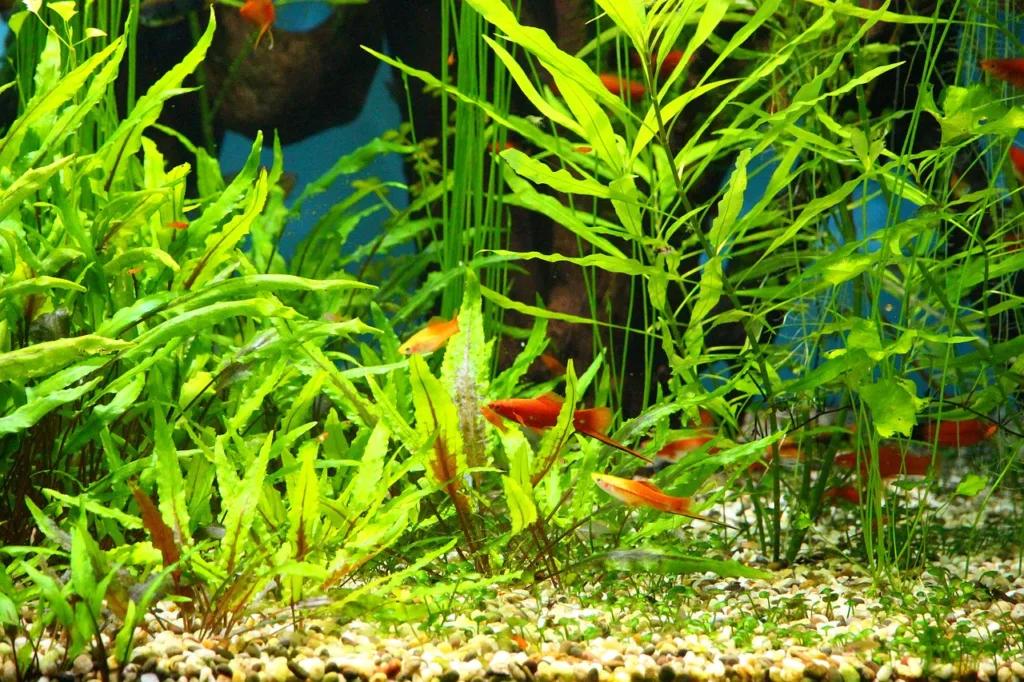
Garnering years of experience in the realm of aquatic plant care has not only deepened my knowledge but also familiarized me with a spectrum of concerns frequently brought up by fellow enthusiasts. Here, I’ll address some of these common queries, drawing from personal encounters and solutions that have stood the test of time.
A. Dealing with Yellowing or Wilting Leaves
One issue that often alarms plant hobbyists is the sight of yellowing or wilting leaves. From my experience, this is typically a sign of nutritional deficiency, often nitrogen or iron, or in some cases, inadequate lighting conditions. Addressing yellowing leaves involves assessing and adjusting your lighting setup to ensure adequate coverage and intensity, alongside supplementing your water with a comprehensive fertilizer that includes essential macro and micro-nutrients. Regular pruning of affected leaves also encourages healthier growth.
B. Preventing Algae Overgrowth on Plant Surfaces
Algae overgrowth on plant surfaces can be a frustrating hurdle, often indicative of an imbalance in light and nutrients. To combat this, I’ve found success in controlling light exposure — reducing the number of hours the aquarium is illuminated — and ensuring nutrients are not in excess, which algae thrive on. Introducing algae-eating species, like certain types of shrimp and snails, into your aquarium can also provide a natural solution to this issue, as they diligently work to keep surfaces clean.
C. Troubleshooting Nutrient Deficiencies and Imbalances
Recognizing and rectifying nutrient deficiencies require a keen eye for specific symptoms displayed by aquatic plants. Stunted growth, discolored leaves, and poor root development can all suggest a shortfall in essential nutrients. My approach involves conducting regular water tests to monitor nutrient levels, followed by adjustments through careful dosing of targeted fertilizers. It’s critical to achieve a delicate balance, as both deficiencies and excesses can detrimentally affect plant health.
D. Managing Light Intensity and Spectral Quality
The issue of lighting is twofold: not just the duration, but also the intensity and spectral quality play a pivotal role in plant health and growth. Using lights with adjustable intensities and spectrums that mimic natural sunlight has profoundly improved the health of my aquatic plants. It’s imperative to tailor your lighting setup based on the specific needs of your aquatic plants, as different species have varied requirements.
E. Overcoming Root Rot and Preventing Future Occurrences
Root rot can decimate the foundation of otherwise healthy plants but is often rooted in poor substrate conditions and inadequate water circulation. Prompt removal of affected roots, coupled with treatment using safe aquatic plant fungicides, has been my immediate course of action. To prevent future occurrences, ensuring a well-oxygenated substrate through proper aeration and maintaining clean water conditions are essential preventative measures.
F. Handling Pests and Parasites on Aquatic Plants
Finally, pests and parasites can wreak havoc in an aquarium. Identifying these invaders early is crucial. I regularly inspect new plants before introducing them to my tanks and quarantine them if necessary. For infestations, treatments vary from manual removal to utilizing safe, aquatic-specific pesticides. Remember, prevention is always preferable, necessitating routine checks and balanced water conditions to deter pests.
Consulting with Experts and Experienced Aquarists
Through my personal journey in cultivating cold water aquatic plants, I’ve found immense value in seeking advice and sharing knowledge with both experts and fellow enthusiasts. This collaborative approach has not only enriched my understanding but also enhanced the well-being of my aquatic ecosystems.
A. Seeking Advice from Cold Water Plant Enthusiasts and Breeders
Engaging with cold water plant enthusiasts and breeders has been instrumental in advancing my practice. These individuals possess years of specialized experience and deep knowledge about specific plant species best suited for cold water environments. By tapping into this wealth of expertise, I’ve been able to adapt strategies that ensure the health and vibrancy of my plants. Breeders, in particular, have offered insights into rare species and propagation techniques that are less known in the broader community.
B. Participating in Online Forums and Communities for Cold Water Plant Keepers
Online forums and communities serve as invaluable resources for connecting with other cold water plant keepers. These platforms facilitate discussions around best practices, troubleshooting, and the latest trends in aquatic gardening. Sharing my experiences and challenges has not only provided me with actionable advice but also fostered a sense of community. The collective wisdom found in these forums has guided me through many uncertainties and has led to many successful interventions in my tanks.
C. Consulting with Professional Aquarists and Hobbyists for Personalized Recommendations
Personalized advice from professional aquarists and experienced hobbyists has been particularly beneficial. These consultations have offered tailored recommendations that consider the unique aspects of my setups, such as tank size, lighting conditions, and existing biodiversity. By discussing my goals and challenges with these experts, I’ve received specific guidance on plant selection, nutrient management, and environmental adjustments to optimize the health of my aquatic gardens.
D. Engaging with Botanical Gardens and Aquatic Research Institutions
I’ve also found it helpful to engage with botanical gardens and aquatic research institutions. These establishments often conduct pioneering work in plant conservation, ecology, and aquatic system management. Visiting exhibitions, attending workshops, and interacting with researchers has broadened my perspective on sustainable practices and innovative approaches to aquatic plant care.
E. Leveraging Social Media Platforms for Learning and Inspiration
Finally, leveraging social media platforms has connected me with a global network of aquatic plant enthusiasts. Instagram, YouTube, and Pinterest are rich with content creators who share tips, tutorials, and personal experiences that inspire and educate. Following accounts dedicated to aquatic plants has introduced me to new species, design ideas, and community challenges that have motivated me to expand and refine my approach to aquatic gardening.
My Opinion on the Care and Maintenance of Cold Water Aquarium Plants
From my personal experience, the key to thriving cold water aquarium plants lies in understanding and catering to their unique needs. Each plant species comes with its specific requirements for light, nutrients, and environmental conditions. In my opinion, success in aquatic gardening strongly hinges on meticulous observation and adaptability. Observing your plants closely will reveal signs of their well-being or distress, guiding you toward the necessary adjustments in their care regimen.
Throughout my journey, I’ve learned the importance of balancing patience with proactivity. Patience, because changes in aquatic environments take time to manifest in plant health; and proactivity, because timely interventions can prevent minor issues from escalating into major problems. Leveraging the wealth of knowledge available from experts, online communities, and scientific research has been invaluable, but integrating this knowledge with a hands-on approach has made all the difference.
In essence, fostering a vibrant and healthy cold water aquarium plant setup is an ongoing learning process, one that is both challenging and rewarding. I encourage fellow enthusiasts to remain curious, open to new ideas, and committed to the wellbeing of their aquatic gardens. Your plants will not only thrive but will also bring an unparalleled aesthetic appeal to your aquarium, creating a serene and lush underwater landscape.
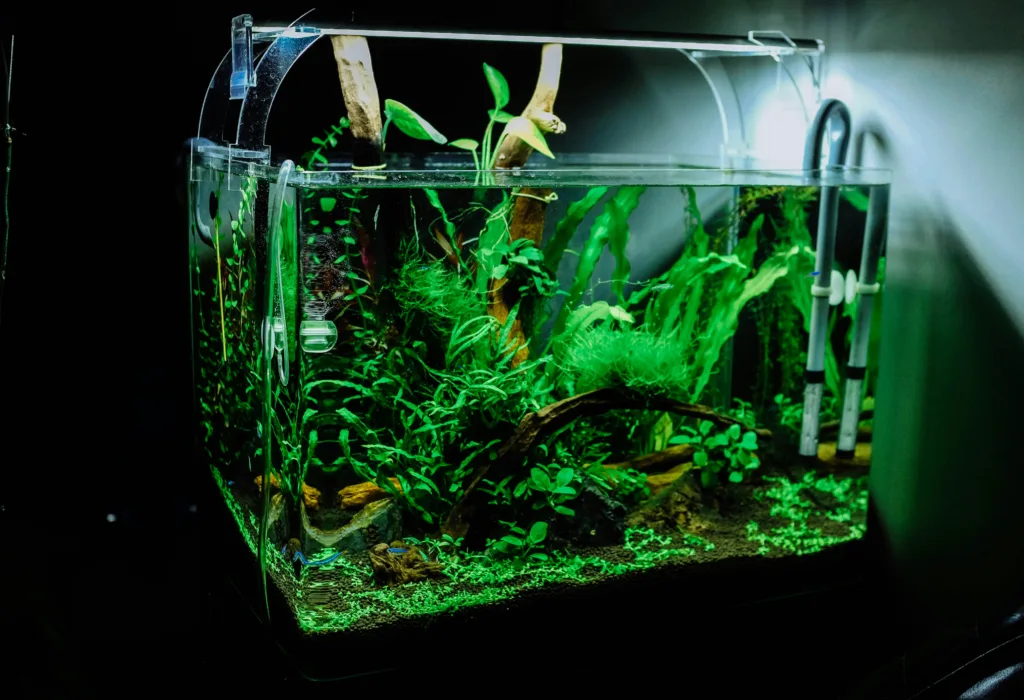

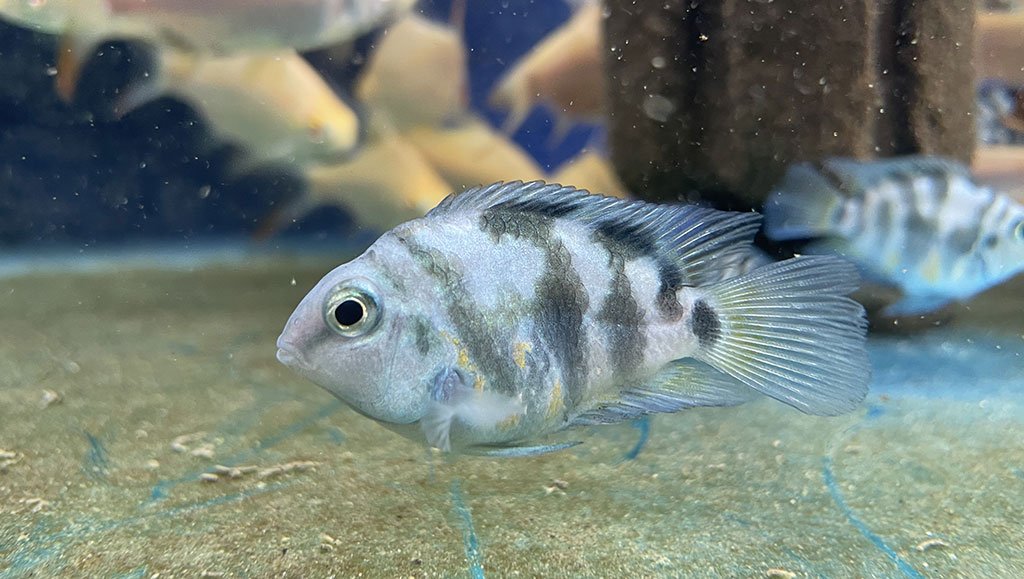
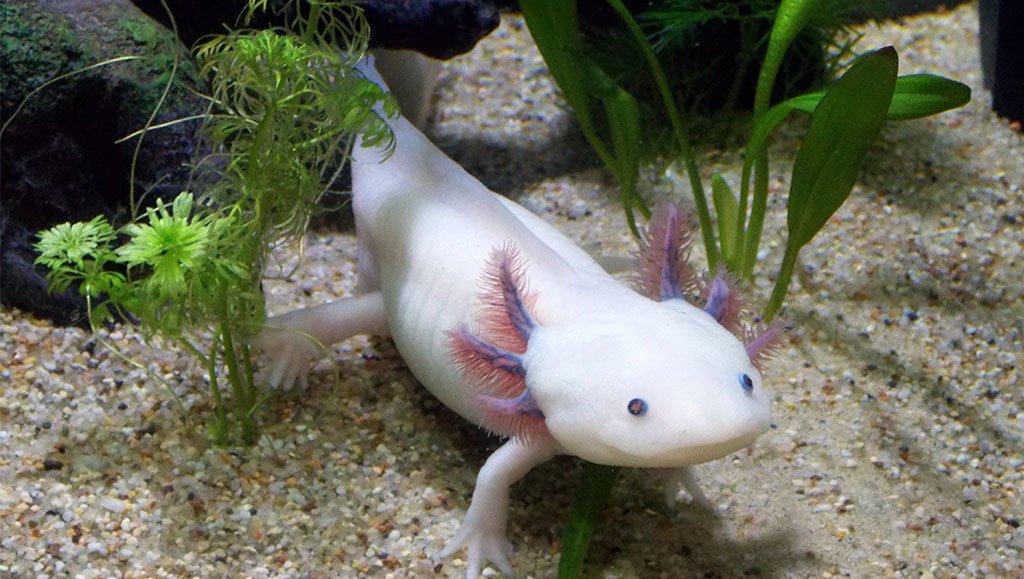

Hi
I have sent a message on your Instagram page.. Regarding the filter..
Thank you for reaching out to us via Instagram! We appreciate your interest in our filters. Could you please provide more details about your inquiry so that we can assist you effectively? Feel free to share any specific questions or concerns you have, and we’ll do our best to provide the information you need.
Your blog is a beacon of light in the often murky waters of online content. Your thoughtful analysis and insightful commentary never fail to leave a lasting impression. Keep up the amazing work!
Thank you so much for your incredibly kind words! It means a lot to hear that my blog is making a positive impact and providing value to readers like you. Your encouragement and support are truly appreciated and motivate me to continue sharing my passion for Aquascaping and Fishkeeping. I’ll keep striving to bring you insightful and engaging content. Thanks again for your wonderful feedback!